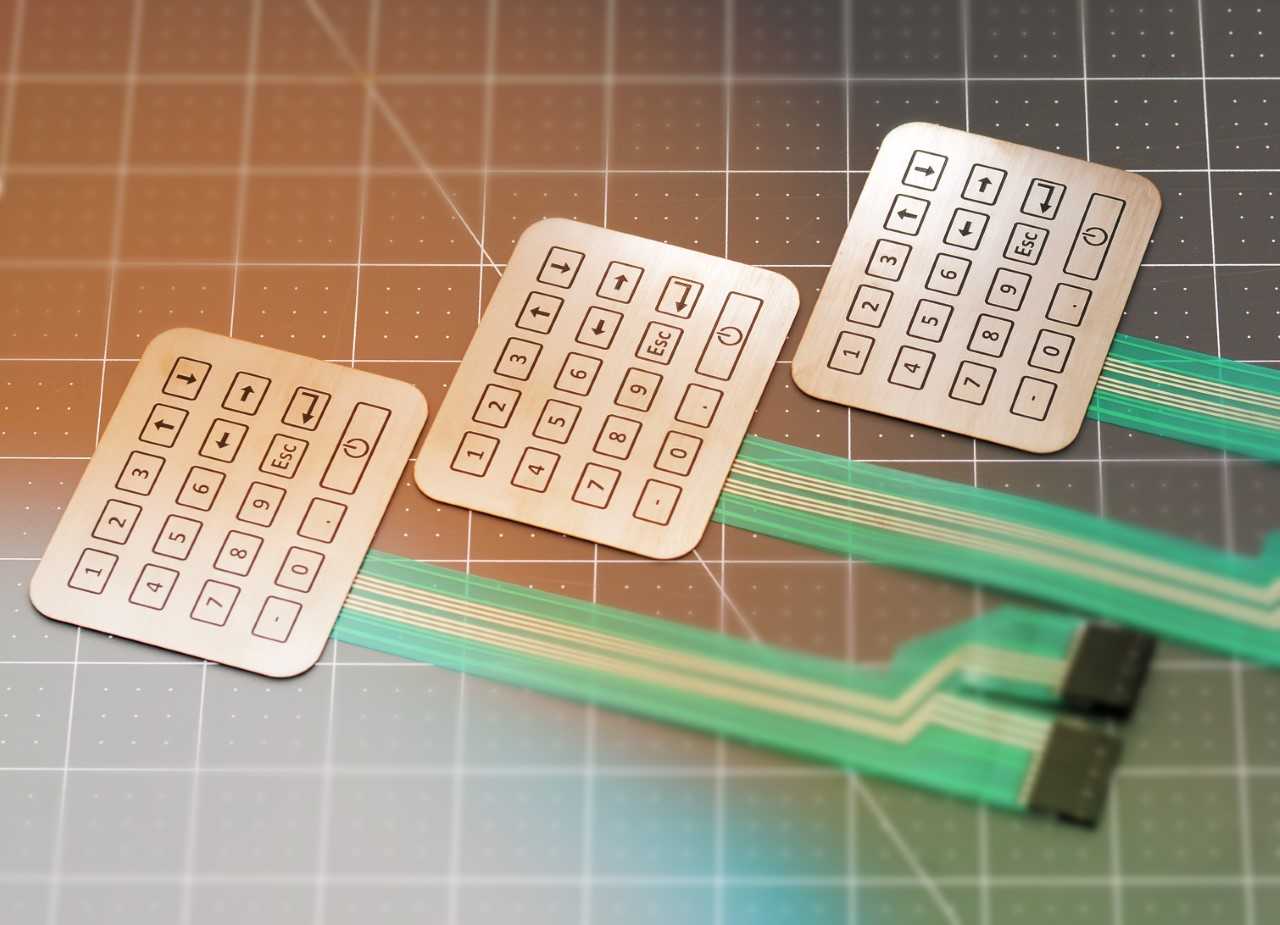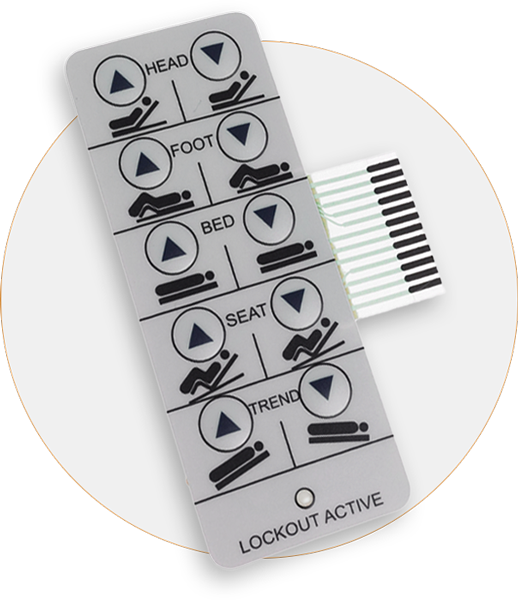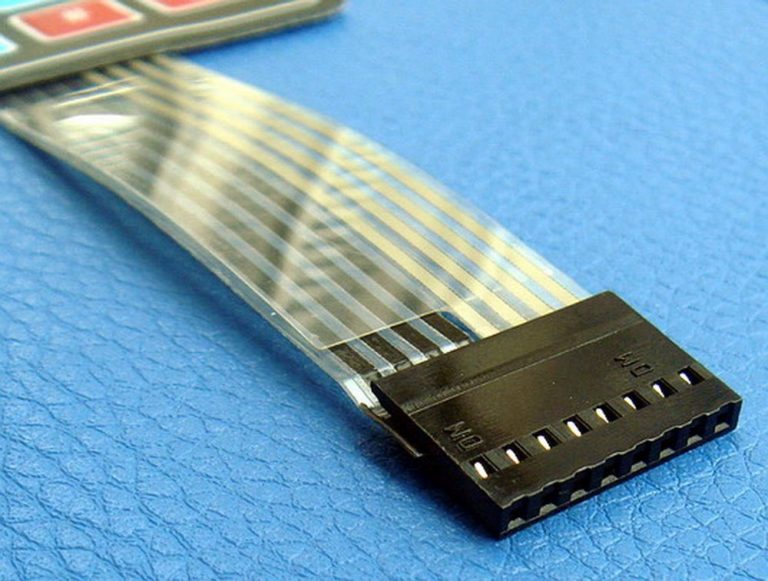Many industries work with a trusted membrane switch manufacturer for long-lasting solutions.
Many industries work with a trusted membrane switch manufacturer for long-lasting solutions.
Blog Article
All Concerning Membrane Switch: Comprehending Its Design and Functionality
When you think about the control interfaces in contemporary gadgets, membrane layer buttons usually come to mind. Let's discover what sets membrane switches apart from other control systems.
What Are Membrane Buttons?

Membrane buttons can also be tailored pertaining to shape, size, and graphics, permitting suppliers to develop one-of-a-kind interfaces tailored to particular items. Overall, membrane switches play a substantial duty in improving customer experience across a large selection of applications.
Just How Membrane Layer Changes Job
When you push a secret on a membrane button, it triggers a straightforward yet effective device. membrane switch manufacturer. The leading layer, commonly made of versatile material, presses down onto a conductive layer beneath it.
You'll notice that the responsive feedback differs based upon the button layout, offering either a soft click or a much more pronounced action. As soon as you launch the trick, the membrane returns to its initial position, resuming the circuit and stopping the signal. This procedure occurs virtually immediately, making certain a responsive customer experience.
Membrane layer switches are prominent as a result of their resilience and resistance to dirt and moisture, making them optimal for numerous applications, from household home appliances to medical devices. Recognizing this procedure helps you appreciate their widespread use.
Trick Parts of Membrane Layer Switches
Recognizing the vital components of membrane buttons is basic for comprehending their performance and style. At the core, you'll locate the graphic overlay, which provides the aesthetic user interface for individuals. Beneath that, there's a spacer layer that divides the circuit layers, making certain that they do not make call till pressed. The circuit layer is where the magic occurs; it includes conductive traces that finish the circuit when you push the switch. Another necessary component is the glue backing, permitting the switch to stick to surfaces securely. The safety layer shields versus environmental factors and use, extending the switch's lifespan. Each component plays a significant duty in making certain reputable performance and user communication. By comprehending these elements, you'll obtain insight right into exactly how membrane switches run and their relevance in various applications.
Materials Made Use Of in Membrane Layer Switch Layout
The performance and durability of membrane switches greatly depend on the products used in their style. You generally come across polyester and polycarbonate as key substratums due to their excellent stamina and adaptability. These materials withstand scrapes and chemicals, making them optimal for requiring settings.
The conductive layers often make use of silver or carbon, chosen for their dependability and conductivity. membrane switch manufacturer. Silver gives premium performance, while carbon is a cost-effective alternative. For the overlay, you might take into consideration a matte or glossy finish, depending upon your visual needs and customer experience
Make particular to choose adhesives that stand up to ecological factors like temperature level and humidity. Choosing the ideal products will certainly assure your membrane layer button stands the test of time.
Design Considerations for Membrane Layer Switches
While developing membrane switches, it's vital to take into account different elements that influence their performance and individual experience. Beginning by focusing on the design and button size; make particular they're instinctive and simple to browse.
Validate your layout fits ecological variables, like wetness or temperature variations, which might affect efficiency. By very carefully considering these components, you'll produce a membrane button that improves usability and complete satisfaction.
Applications of Membrane Buttons
Membrane buttons are flexible components located in different applications, from commercial devices to consumer electronics. You'll see their influence in equipments that call for long lasting interfaces and in gadgets that profit from streamlined styles. Comprehending these applications helps you value the functionality and practicality of membrane layer buttons in day-to-day technology.
Industrial Devices Use
When you're wanting to improve the performance of industrial tools, membrane switches supply a trusted option that combines durability with easy to use style. These switches are ideal for extreme settings, offering resistance to dust, dampness, and chemicals. You'll locate them in control panels for manufacturing devices, HVAC systems, and medical devices, where accuracy and responsiveness are important. Their reduced profile means they fit effortlessly into various tools, saving important room while maintaining convenience of use. With personalized graphics and backlighting choices, you can create an user-friendly user interface for drivers, boosting effectiveness and safety and security. Plus, their lengthy lifespan decreases maintenance expenses, making them a smart investment for your industrial applications. Welcome membrane switches to improve your operations and boost overall performance.
Customer Electronics Assimilation
In the domain of customer electronics, membrane buttons play a vital duty in enhancing customer communication and device capability. You'll locate them in devices like microwaves, push-button controls, and video gaming consoles, giving a seamless way to interact with innovation. Their streamlined design enables for easy integration right into numerous products, making controls intuitive and user-friendly. With their ability to integrate graphics and backlighting, you can delight in a contemporary visual that enhances the tool's general appearance. Membrane switches likewise assure toughness and resistance to dirt and dampness, prolonging the lifespan of your electronics. By choosing membrane switches, you improve not just the capability yet likewise the design of your devices, making day-to-day communications smooth and pleasurable.
Advantages and Negative Aspects of Membrane Buttons
While membrane buttons supply a variety of benefits, they also come with some disadvantages that you should take into consideration. One significant benefit is their compact layout, making them excellent for space-constrained applications. They're likewise affordable, giving a sturdy remedy with a low production cost. Furthermore, their seamless surface is easy to clean, enhancing health in environments like medical facilities.

However, there click are downsides. Membrane layer buttons can have a shorter lifespan contrasted to mechanical switches, specifically under heavy usage. They can also be much less responsive, which may impact individual feedback throughout operation. If damaged, fixing them can be challenging and often calls for full substitute. Inevitably, their sensitivity to severe temperatures and environmental problems might limit their effectiveness in specific setups. Stabilizing these benefits and drawbacks will certainly assist you figure out if membrane layer switches are the best fit for your task.
Regularly Asked Concerns
How Much Time Do Membrane Layer Changes Typically Last?
Membrane layer switches normally last between 5 to one decade, depending on use and ecological problems. You'll wish to examine factors like wear, direct exposure to moisture, and temperature variations to gauge their long life properly.
Can Membrane Switches Over Be Customized for Certain Designs?
Yes, you can tailor membrane layer buttons to fit specific designs (membrane switch manufacturer). You'll Click Here have the liberty to select shades, shapes, and designs that match your task's requirements, guaranteeing they mix perfectly with your total visual
What Is the Cost Variety for Membrane Layer Switch Production?
The expense array for membrane layer switch production commonly falls between $1 and $10 per system, relying on elements like style intricacy, amount, and products. You can get quotes from manufacturers to discover the most effective option.

Are Membrane Switches Over Water-proof or Immune?
Membrane layer switches can be designed to be water resistant or immune, relying on top article materials used and building approaches. If you need them for wet environments, guarantee you define those requirements throughout the layout process.
Just How Do Membrane Layer Switches Over Contrast to Typical Buttons?
Membrane layer buttons are normally thinner and more versatile than traditional switches, using a sleek design. They're usually less complicated to cleanse and integrate, but could not offer the tactile comments you're used to with mechanical options.
Conclusion

Report this page